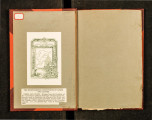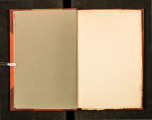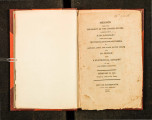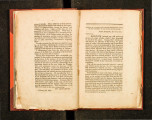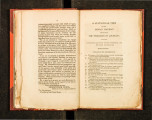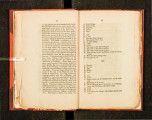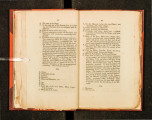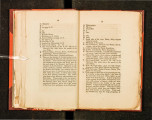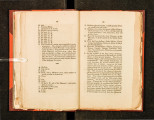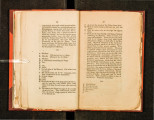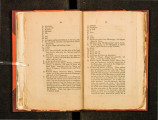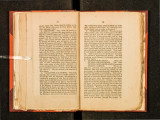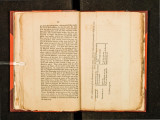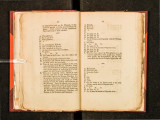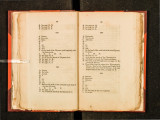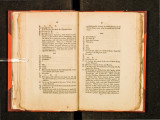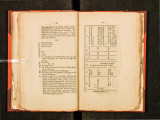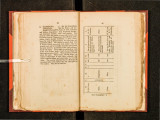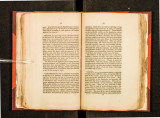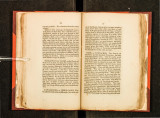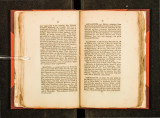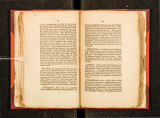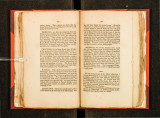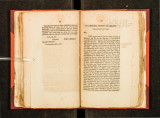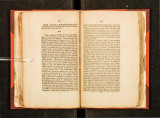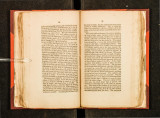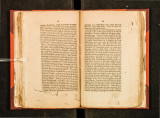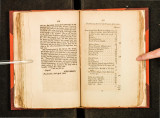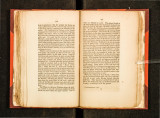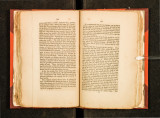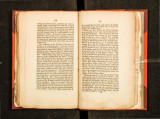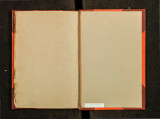| OCR Text |
Show 152 ofthc coagulum is penetrated in all its parts by calc:t rio us grains, extre1nely minute, and eli vided in thl , more recent web, but much larger and occupying thl whole of the inferior lamina. 'fhe unclerstratum is continually consolidating, and adding bulk and height to the rock. vVhen tlus acquires such an elevation as to stop the pa~sage of the water, it finds another course over the rock, hill, or margin of the creek, forminr-;·, in turn, accumulations of n1atter over the " ·hole of the adjacent space. \Vhen the water has found itself a new channel, the green tnatter, which sometimes acqllin: s a thickness of half Dn inch, is speedily converted into a rich vegetable earth, and becomes the food of plants. The ~urface of the calcarious rock also decomposes and fm ms the richest black 1nould itttimately mixed with a consickrable portion of soil; plants and trees vegetate luxuriantly upon it. On examining <.t pit.ce of ground upon \rhich the snow dissolved as it fell, and which was covered with herb::lge, they found, in some places, a calc~u ious crust on the surfact; but in general a depth of fr01n five inches to a foot of the richest black mould. The surface was sensibly warm to the touch. In the air the mercury in the thermon1ctcr stood at 44°; when placed four inches under the surface, and covered with earth, it rose rapidly to 68 °; and upon the calcarious rock, eight inches beneath the surface, it rose to 80°. This result was uniform over the whole surface, which was about a quarter of an acre. On searching they found a spring, about fifteen inches under the surface, in the water of which the thermometer shewed a temperature of 130°. Beneath the black mould was found a brown mixture of lime and silex, ver_\ loose and divisible, apparently in a state of decomposit10n, and progressing towards the formation of black mould; under this brownish mass it became gradually whiter and harder, to the depth of from six to twelve inches, where it was a calcarious sparkling stone. It was evident that the water had passed over 153 t?is place, and formed a flat superficies of silicious h~e. stone; and that it~ position, nearly level, h·td facilitated the ~~cumulatiOn of earth, in proportion as the decompo~It1on advance~. Similar spots of ground were found hrgher up the hill, rcsemblinO' little savannas., near which hot springs \Yere alway~ discovered, wh1ch had once flowed over thetn. It appear~ probable. that the h?t water of .the springs, at an early p~nod, had all1ssued from Its grand reservoir in the hill, ~t a much greater elevation than at present. The calcanous crust may be traced up, in most ~ituations on the west side of t~c hi:l looking down the creek and valley, to a certam height, perhaps one hundred fe.et perpenclicu_lar; in this I~ep;ic;m the hill rises precipitously, and IS stu<;ldecl With hard silicious stones ; below.' the descent Is more gradual, and the soil a ca~ca~·1?us ~lack earth. It is easy to discriminate the pn~1t~ve .lull from that ""hich has accumulated, by preCIJ?ItatiOn, from the water of the springs; this last Is entirely .confined to the west side of the hill, and washed at Its base by the WQters of the creek no hot spring being visible in any other part of its 'circumference. By actual measurement alonO' the base of the hill the influence of the sprinO's is f~und to extend seventy perches, in a direction°a little to the east of north: ~long the whole of this space the springs have deposited stony matter, calcarious with an addition of silex, or chrystalized lime. J'he accumulation of calcarious matter is more considerable at the north end of the hill than the south ; the first may be above a hundred feet perpendicular, but sloping mu~h. more gradually than the primitive hill above, ~nhl1t. appro~ches the. c:eek, where not unfrequently 1t term~nates In a precJ-pice of from six to twenty feet. ~~~ difference between the primitive and secondary ~hli? so striking that a superficial observer must noh~ e 1t; the first is regularly very steep, and studded ~~.t~ rock and stone of the hardest flint, and other Slhcwus co1npounds, and a superficies of two or three 20 |



